Market snapshot: International student recruitment in Nepal
- Nepal is experiencing a youth bulge, with one of the fastest growing college-aged populations in the world
- This presents both opportunities and challenges that depend on Nepal’s economic and developmental trajectory over the next few years
- About 1 in 5 college-aged Nepali students go abroad for tertiary studies, a staggering proportion
- Research by Sinorbis, as well as separate forecasting by the British Council, highlights Nepal as a growth market to watch for foreign educators
- Scholarships and the ability to work during studies are strong draws for Nepali students
FAST FACTS
Capital: Kathmandu
Population: 29.6 million (2024)
Youth population: 21% of the population is aged 16–25, and more than half are under the age of 25.
Median age: 23.5
GDP: US$44.1 billion (2024)
Currency: Nepalese rupee (NPR)
Language: Nepali is spoken by 78% of the population, and Maithili is the next-most spoken language. However, over 123 languages are spoken, and in some districts, more than half of residents are non-Nepali speakers.
Main language of instruction: In general, students learn in Nepali in public schools and English in private schools. There is controversy around how this impacts students for whom Nepali is the second tongue and English the third.
English proficiency: “Moderate” and climbing according to the EF Proficiency Index.
Religion: The vast majority of Nepalis are Hindu, and a small proportion are Buddhists.
Geography: Nepal is in South Asia. The country is landlocked: China is to the north and India shares borders in the south, east, and west.
Outbound students: Over 100,000. In 2021, the outbound mobility ratio was 19%.
Preferred destinations: Australia, Japan, Canada, US, UK, India.
Top fields of study for Nepalis: Japanese language programmes in Japan, followed by accounting, management, business, information technology, science, computer science, engineering, health, and science and technology, according to the number of No Objection Certificates (NOCs) issued by the government of Nepal between July 2023 and July 2024.
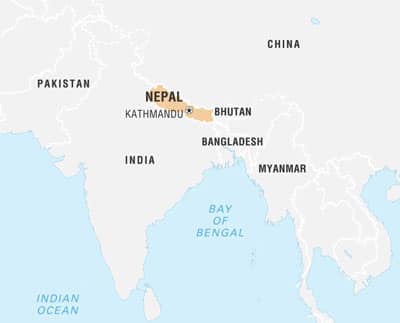
Scale of opportunity
In the past five years, approximately one in every five Nepali students pursuing higher education chose to study abroad. Nepal’s outbound mobility ratio was 19% in 2021, compared with less than 2% for China and India. This provides a clear indication of how high demand is for study abroad in this small South Asian nation.
At home, Nepali students seeking degrees do not have many high-quality tertiary options. None of Nepal’s nine universities and three medical institutions recognised by Nepal’s Ministry of Education make it into the major world university rankings, and erratic quality and delivery of education is a feature of the tertiary education system.
The high outbound student mobility ratio mirrors a workforce trend, which is that hundreds of thousands of Nepalis go abroad to work every year. DW.com reports that according to the International Fund for Agricultural Development (IFAD), “remittances from migrant workers contributed up to 26.6% of Nepal's GDP, valued at an estimated $11 billion, in 2023.” In many cases, those remittances are helping families to send their children abroad to earn degrees and training and to receive more career opportunities than Nepal can offer them.
What’s behind the high level of outbound?
The United Nations Development Programme (UNDP) ranks Nepal 146 of 193 countries on the Human Development Index. The ranking is improving but is still low enough that it suggests why many Nepalis move to the Middle East to work, and increasingly to Europe, which is viewed as more prestigious. The Nepal Economic Forum reports that four in five Nepali households have a family member abroad.
There is a tension here: Nepalis are moving out of their country, which leads to brain drain, but once abroad, they send money back home that contributes to Nepal’s national GDP and helps families afford costs of living. The average hourly wage in Nepal is less than US$4. The heavy reliance on remittances also means that Nepal is incredibly vulnerable to external shocks, such as tightened immigration settings or economic downturns in preferred destinations.
Private consumption, fuelled by remittances, accounts for 80% of Nepal’s GDP. The World Bank notes that real GDP growth in 2024 accelerated to 3.9%, compared with 2% in 2023. It says that despite challenges – such as low public infrastructure funding including in the education sector – it is more optimistic about Nepal’s future after successful elections in 2017:
“There is a newfound optimism for greater political stability, inclusion, good governance and sustainable growth. The new federal structure presents unprecedented opportunities for Nepal to reset its development storyline, as outlined in the Systematic Country Diagnostic (SCD).”
Generally low quality of education is also a major reason Nepali students go abroad. Stella Thapa, a student at the Kathmandu University School of Management, explains on LinkedIn:
“Universities of Nepal such as Tribhuvan University (TU) face ongoing issues that affect academic progress and student satisfaction. Problems include delays in publishing exam schedules, irregularities in exams and academic calendars, and extended completion times for degree programmes. Many students who aim to finish their studies in four years often find themselves graduating in five to six years, which can be disheartening and demotivating. However, few universities offer quality and advanced educational programmes. Students often question whether their qualifications will translate into promising job opportunities and successful careers in Nepal.”
Especially scarce in Nepal are high-quality degrees in engineering, medicine, and technology.
Working while studying is important for many Nepali students
The Nepal Economic Forum explains that in addition to remittances, many Nepali students fund study abroad by working overseas:
“It is the students who fund their studies themselves by working. This is evidence worldwide when we see Nepali students working in restaurants across the US, UK, Europe, Japan or Australia.”
The organisation also reports that 85% of Nepali households own their own house. Not paying rent frees up some income for study abroad.
The latest Global Student Living Index (2022) found that Nepali students are highly price sensitive, especially about accommodation. Price was the top factor for Nepali students looking for accommodation (87% vs 61% for all international students), and “kitchen size and facilities were much more important to these students than most internationals (71% vs 57%).”
Where are Nepali students going?
Nepal’s Ministry of Education issued 112,595 foreign study permits (known as No Objection Certificates, or NOCs) to students in the last fiscal year. Ms Thapa, in her post on LinkedIn, reports that those students went to 66 different destinations, but 80% went to just five countries: Japan, Canada, Australia, UK, and the US. A total of 34,370 NOCs went to students going to Japan, followed by those headed to Canada (15,980), Australia (14,370), the UK (13,340), the US (11,260), and South Korea (6,890).
Other destinations for which more than 1,000 NOCs were granted were India, UAE, Denmark, Finland, France, and New Zealand.
ApplyBoard illustrates the remarkable growth of Nepali students in Canadian and US higher education institutions over the past few years in the charts below (Canada is the first chart, and the US is the second).
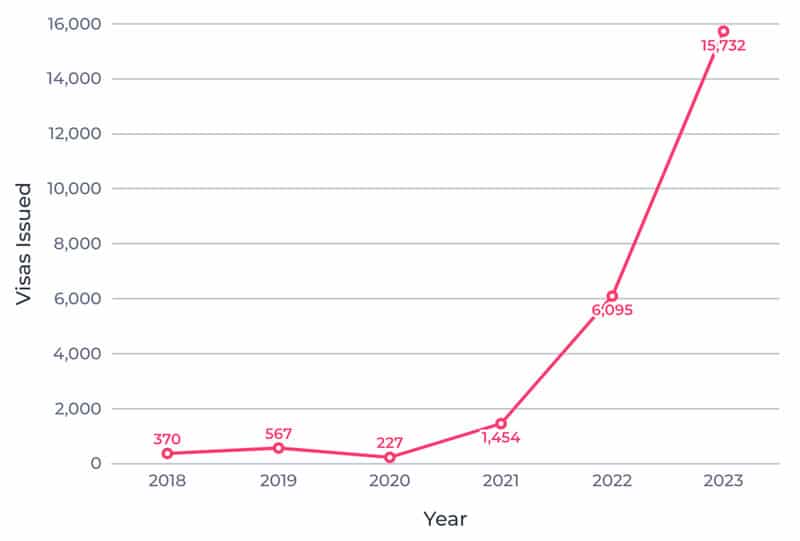
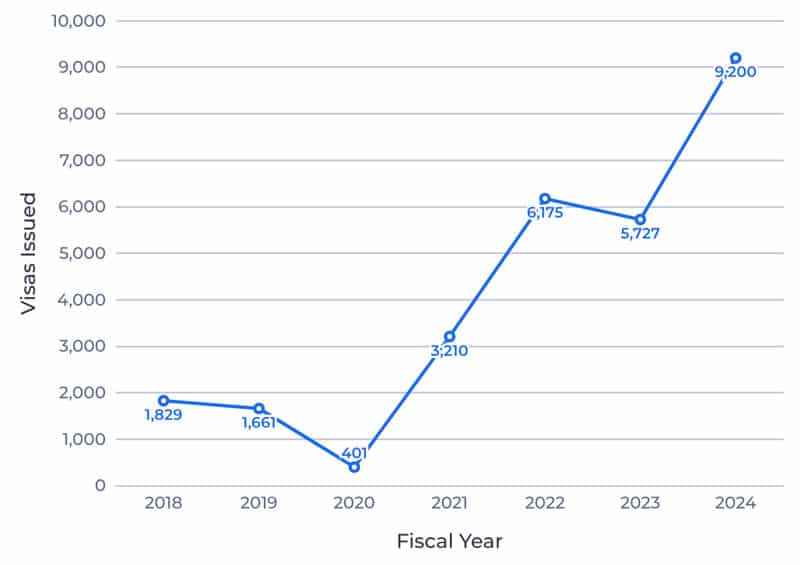
ApplyBoard also notes that Nepali students remain interested in the UK despite the inability of most to bring their family due to the dependant’s ban imposed by the previous government. Over 8,500 Nepali students received a main applicant visa for the UK in 2023 (+83% y-o-y). In Q1 2024 alone, 27% more visas were granted to Nepali students compared with Q1 2023. What’s interesting about the 2024 trend is that it contrasts with a 22% decline in visas granted to all international students in the UK.
Australia is the outlier among the Big Four destinations, with policy changes in Nepal and Australia contributing to a big drop in Nepali student numbers (as shown in the chart below), especially in the vocational sector.
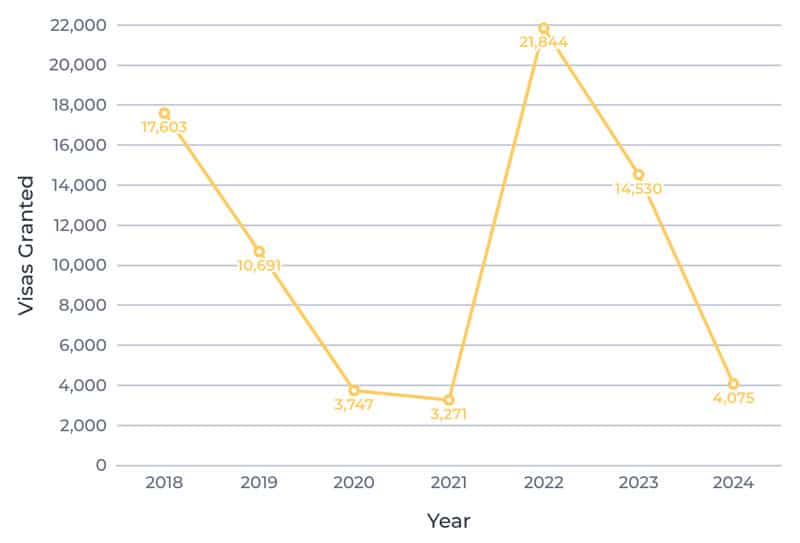
Meanwhile in Japan, the number of Nepali students surged to over 45,000 in 2023 according to Nikkei Asia, making Nepal the second largest sending market after China. The surge also displaced Vietnam as Japan’s number two sending market. Even after Japan raised international student tuition fees in the summer of 2024, the cost of studying in Japan is still much less than in the Big Four destinations. Many Nepali graduates in Japan go on to work in sectors such as hospitality and nursing.
What are projections for growth?
A chart from a new Sinorbis study, Asia Atlas: The future of international student marketing in Asia, is a dramatic illustration of how many Nepali students will head abroad for higher education in the next few years. From 23rd place in 2022 (40,560), Nepal is projected to become the 7th largest sender of students in 2025 (113,395).
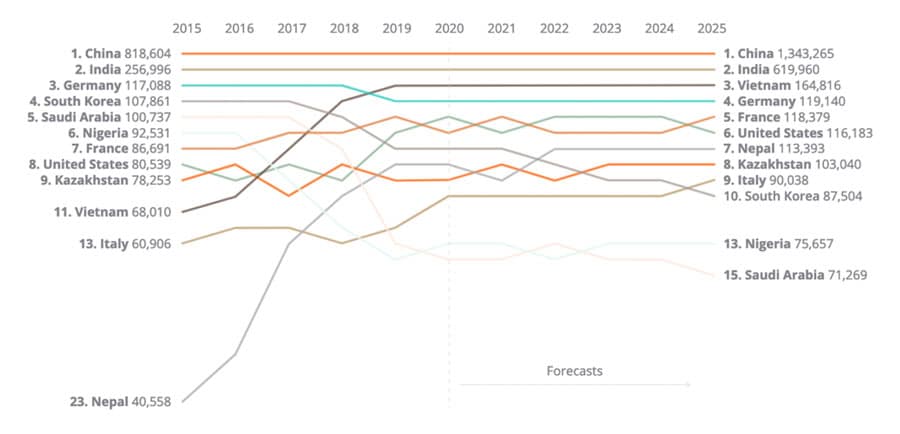
Sinorbis presents a similarly impressive graph projecting Nepali higher education enrolments in the US.

Sinorbis data also show that Nepali students are especially drawn to healthcare-related fields in the US.
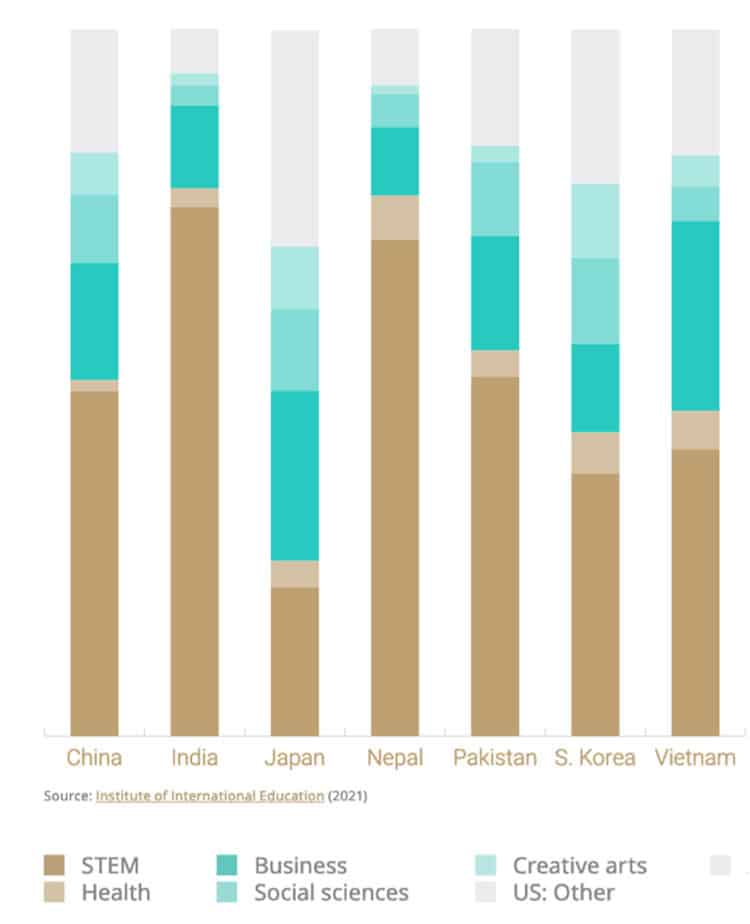
Popular levels of study
Good graduate programmes are in short supply in Nepal, and so there is strong demand for graduate as well as undergraduate studies. IIE Open Doors data for 2022/23 shows that 42% of Nepali enrolments were undergraduate (+39% y-o-y) and 37% were graduate (+21% y-o-y). WENR reported in 2022 that “mobility is expected to grow particularly at the graduate level—a sector that is underdeveloped in Nepal with less than one percent of university campuses offering Ph.D. programmes.”
In 2023, Nepal’s government stopped issuing NOCs for language and vocational programmes, but a popular backlash forced it to reverse the ruling. It did, however, create a list of eligible foreign institutions for students interested in language or vocational training. Grace International provides a primer on how students must apply for an NOC here.
Pre-tertiary education system
The devastating earthquakes in Nepal in 2015 set back the progress the country had made previously on expanding access to education. Many schools were destroyed, more than 9,000 killed, and more than 22,000 injured. In 2022, only 27% of students completed upper secondary schooling, falling to 10% among the poorest households and rising to 59% in the richest households, according to UNICEF. In a reversal of historical trends, girls now have a higher completion rate at every level of schooling than boys.
In terms of achievement, students who speak Nepali at home have better outcomes than those who speak another language and then go to school to be instructed in Nepali. The dearth of instruction in other native languages of Nepal are a subject of great controversy. Middle class and wealthy Nepali households tend to send their children to schools where English is the main language of instruction.
Free primary and secondary education is meant to be a right for Nepali students, but the reality is that at the secondary level, there are significant fees parents must pay (e.g., books, uniforms), which is part of the reason for the high dropout rate among poorer Nepali students.
Private schools are the preferred option for those who can afford them. The share of private schools is 20%, while public (aka community) schools account for 80%. As for enrolments, 27% are in private schools and 72% in public. The Nepal Page explains that:
“The education system has been so privatised that a huge learning gap has opened up between those that can afford private schools and those that can’t. The facilities at private schools are noticeably better. Many families try to live in Kathmandu where they have access to the best schools. Children at these school dress in crisp, clean uniforms and study in English and Nepali.
There is huge discrepancy between private and public schooling a major social injustice. Uttam Sanjel, the founder of Bamboo School’s for the poor told AFP. “There are two kinds of schooling. The public school students do not know how to speak in English even when they leave school. The private school students can send emails to their parents from grade two. This is not how it should be. It is wrong because it will create two kinds of citizen.”
Clearly, lower-income Nepali students will be highly motivated by scholarships because they may not be able to study abroad without them.
There are several international schools, which can be explored here.
Many Nepali students will need foundational programmes to set them up for success in higher education due to uneven quality of education at home or language issues.
Tertiary education
Nepali students do not have many high-quality tertiary options in their country. None of Nepal’s nine universities and three medical institutions recognised by Nepal’s Ministry of Education make it onto major world university rankings. However, US News ranks Tribhuvan University 962nd in the world and considers its clinical medicine, environment/ecology, and public, environmental and occupational health programmes to be worthy of recognition.
The full list of universities is:
• Tribhuvan University
• Nepal Sanskrit University
• Kathmandu University
• Purbanchal University
• Pokhara University
• Lumbini Bauddha University
• Sudur Paschimanchal University
• Madhya Paschimanchal University
• Agriculture and Forestry University
Under the umbrella of those public universities (except for Kathmandu University, which is privately funded and autonomous) are hundreds of colleges and campuses. Many of these are privately owned. The private colleges are considered to offer higher quality education than public ones.
There is also a growing number of foreign-affiliated tertiary programmes in Nepal, with institutions from Scotland, UK, Malaysia, Poland, Switzerland, and Thailand active in this space. A full list can be found here.
The outlook
The British Council forecasted outbound mobility patterns in 30 major student sending markets in an early-2024 report. It found that the growth rate will slow in most of those markets. However, Nepal was categorised as having high growth potential along with high market risk, in part because of economic and political volatility in the country.
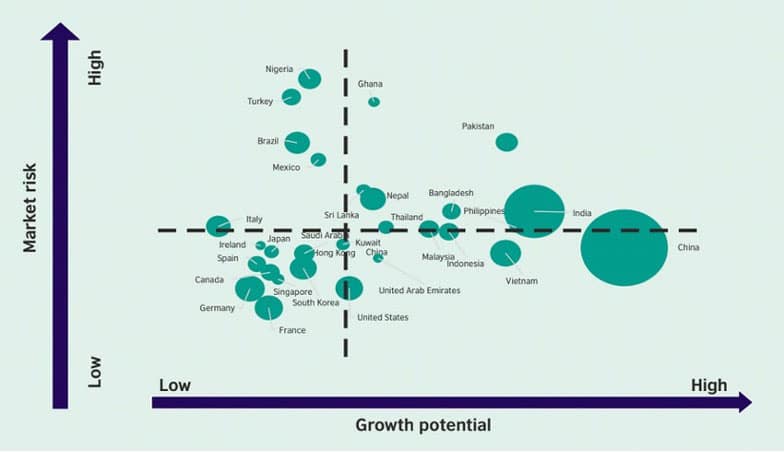
The top motivations for Nepali students are scholarships and the ability to work during studies. It is worth considering a scholarship programme to solidify a presence in Nepal for many reasons, not least because Nepal has one of the world’s fastest growing populations of 18–22-year-olds – along with limited job prospects. The youth unemployment rate hovers at 20% and is the third highest in South Asia after Bhutan and Sri Lanka. Until the government is able to commit more budget to education, it is likely demand for study abroad will remain very high in Nepal.
For additional background, please see:
















